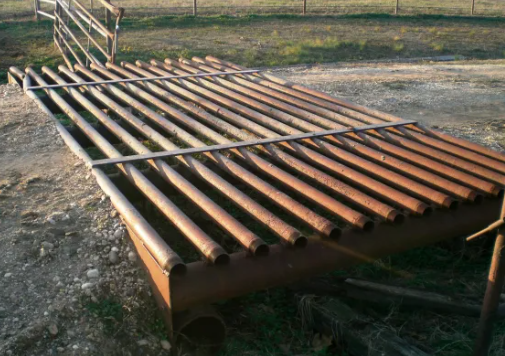In rural areas where road infrastructure intertwines with livestock grazing, ensuring the safety of both animals and motorists becomes paramount. Cattle grids, also known as cattle guards or stock grids, stand as silent sentinels, effectively managing the movement of livestock while facilitating smooth vehicular traffic. These unassuming yet vital structures play a crucial role in the intricate tapestry of road infrastructure, particularly in regions where agriculture and transportation intersect. So, read on to explore how these work, why they’re essential, and their diverse applications across agricultural and transportation landscapes.
Ace the Basics
At first glance, it may seem like nothing more than a series of parallel bars or beams set into the ground. However, the design and construction of these are carefully engineered to serve a specific purpose. It consists of evenly spaced bars or pipes laid across a trench dug into the roadway. The gaps between the bars are wide enough to prevent the hooves of livestock from gaining traction, effectively discouraging them from attempting to cross.
How Does It Work
Their effectiveness lies in their design, which leverages livestock biomechanics. When an animal such as a cow, sheep, or horse approaches a grid, it instinctively perceives the gaps between the bars as a potential hazard. Unlike solid ground, its structure creates an unstable surface that causes discomfort and uncertainty for the animal. As a result, most livestock will hesitate or refuse to step onto the grid, effectively preventing them from crossing the barrier.
Benefits of Cattle Guards
Cattle grids offer several advantages in managing livestock and maintaining road safety:
- Livestock Management: These guards provide a cost-effective, low-maintenance solution for containing or excluding livestock from certain areas without physical barriers such as fences.
- Traffic Flow: They help prevent traffic accidents caused by collisions between vehicles and animals by deterring livestock from entering roadways. This is especially important on rural roads, where livestock roaming freely can pose a significant hazard to drivers.
- Preservation of Natural Barriers: In environmentally sensitive areas or regions with protected wildlife habitats, they allow for the unimpeded movement of native fauna while still preventing livestock from straying into these areas.
- Durability and Longevity: Well-constructed grids are designed to withstand heavy loads and constant traffic without frequent maintenance, making them a durable solution for rural infrastructure.
Applications of Cattle Guards
Cattle guards are commonly used in a variety of settings, including:
- Agricultural Properties: Farms and ranches use them to prevent livestock from wandering onto public roads or accessing areas where they are not permitted. This helps streamline farm operations and minimise the risk of accidents involving farm animals and vehicles.
- Roadside Infrastructure: Transportation departments and road authorities install them along highways and rural roads to mitigate the risk of collisions between vehicles and wandering livestock. These grids are often accompanied by warning signs to alert drivers to the presence of the barrier.
- Protected Areas: National parks, wildlife reserves, and other protected areas utilise them to maintain boundaries and prevent domesticated animals from encroaching on sensitive ecosystems or endangering native wildlife.
- Industrial Sites: They are also employed in industrial settings such as mining sites and construction zones to control the movement of livestock near operational areas or hazardous zones.
Conclusion
Cattle grids may appear deceptively simple, but their role in managing livestock and enhancing road safety cannot be overstated. These unassuming structures serve as a highly effective barrier that deters livestock from entering roadways while allowing vehicles to pass unimpeded. Whether on a remote farm, a bustling highway, or a pristine wilderness area, they play a vital role in preserving order and protecting human and animal lives. Understanding how these grids work and why they matter is essential for anyone involved in agriculture, transportation, or land management in rural areas.

